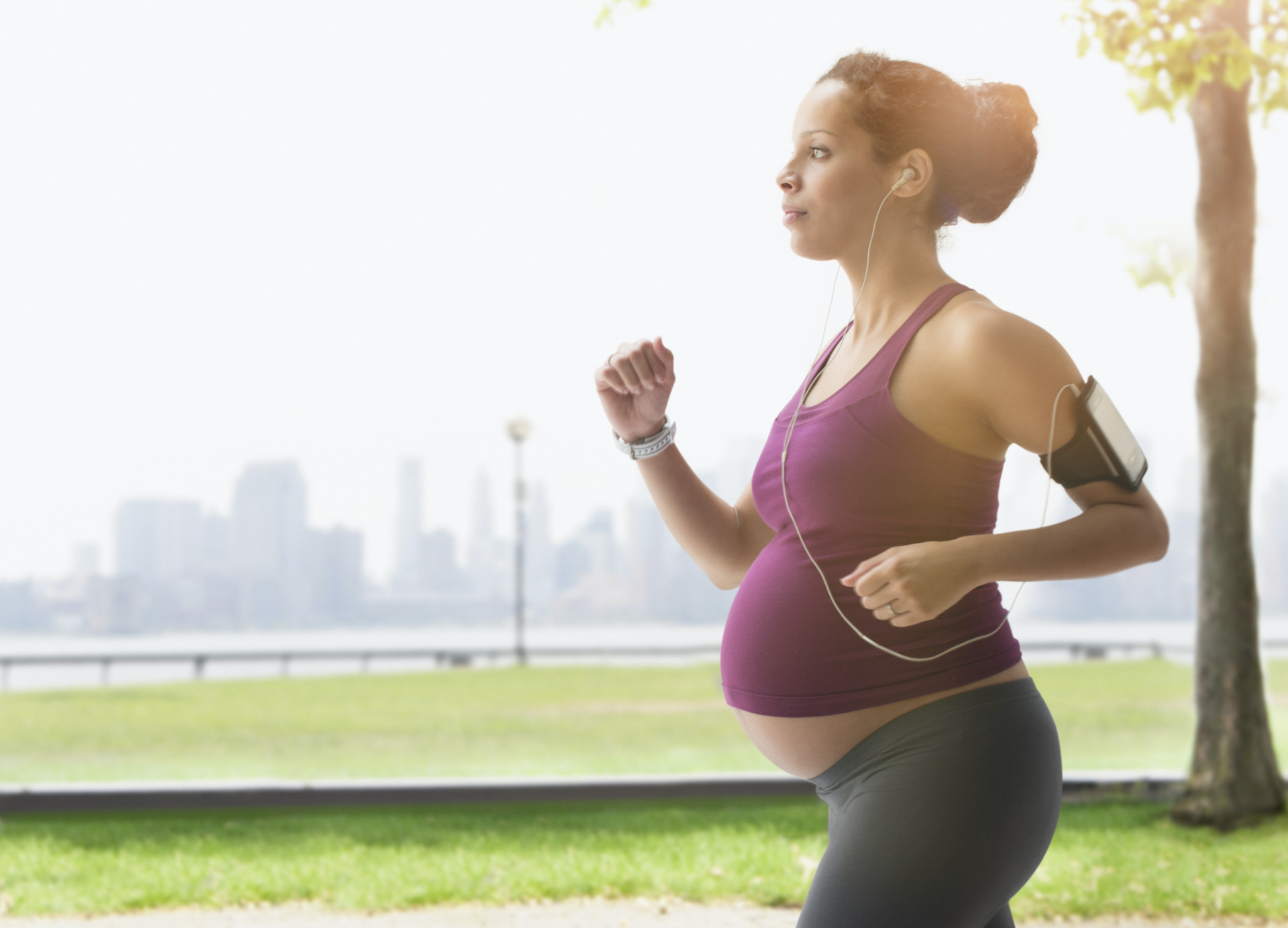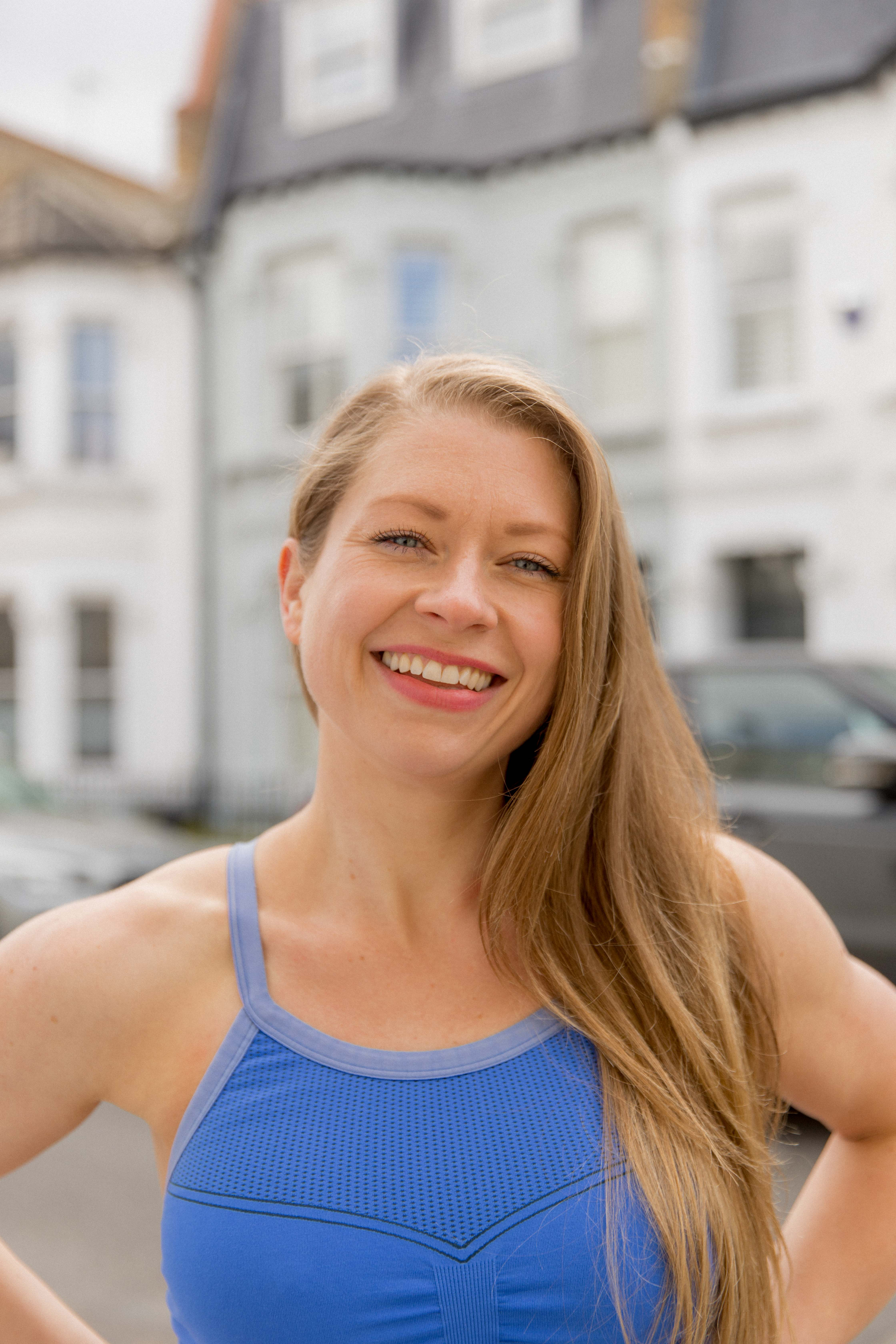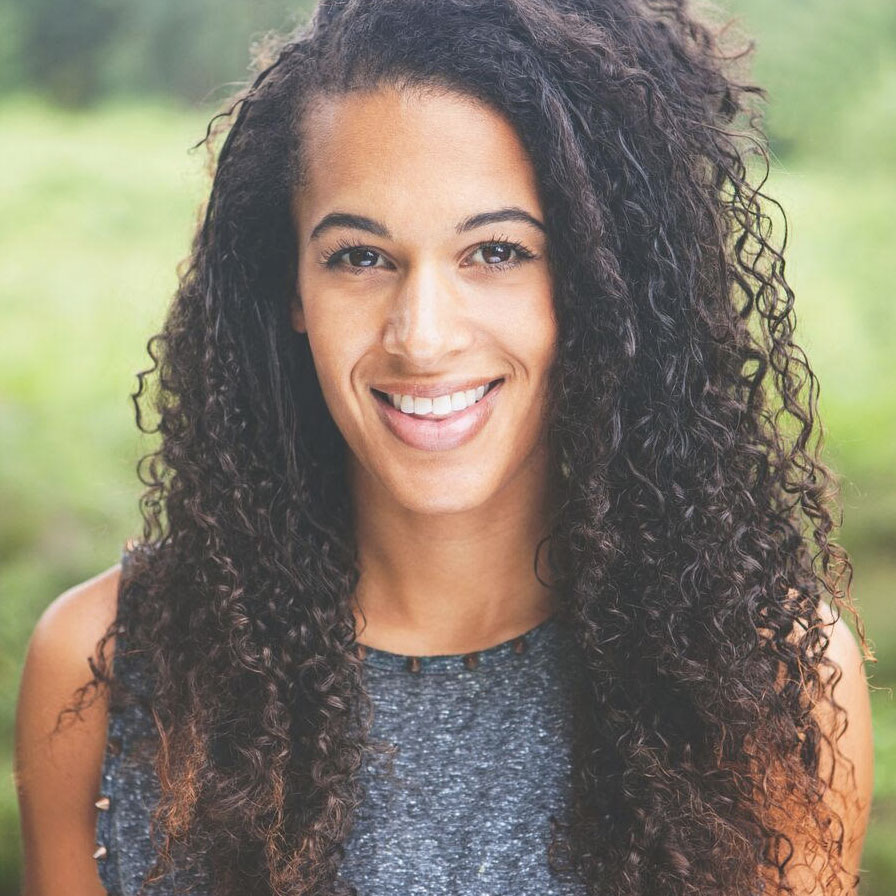5 best pregnancy exercises - and what to avoid, according to prenatal trainers
The dos and don'ts from three top fitness experts


Pregnancy exercises can keep you happy and healthy throughout all of your trimesters, but you may be wondering what activities you can do safely - and what to avoid.
The NHS confirms that exercise in pregnancy is good and safe for you and your baby. Not only does it help to manage pregnancy weight gain, but it also helps prepare your body for the stages of labour. "Exercise during pregnancy can keep you energised and strong enough to carry a baby," says certified pre- and postnatal trainer Anna Kaiser, "Elevating your heart rate will help stimulate blood flow, reduce inflammation, increase energy and beat those baby blues, as long as you don't push yourself beyond what you're used to."
Remember, it's likely that your energy levels and mood will fluctuate during your pregnancy so it’s important to be mindful of how you are feeling on any given day, but overall, staying fit and well is really important for both mother and baby in all three trimesters.
And, there are specific activities you should avoid in order to stay safe whilst exercising in pregnancy. These include anything that risks ‘bumping the bump’ (such as contact sports or those with a higher risk of falling), as well as scuba diving and exercising at high altitude or in extreme temperatures.
5 best pregnancy exercises
1. Swimming
How to swim in pregnancy safely: You can generally swim throughout pregnancy for as long as you feel able and, according to research, it’s one of the safest forms of exercise during pregnancy. Breast stroke is a good swimming style because it opens and strengthens your chest. This prepares you for when you need to control your breathing in labour. Plus it opens your hips and encourages flexibility of the pelvis. Just remember to keep your back and neck straight in order to protect your back. If you have difficulty, use a float under each arm or under your chest. Do as many lengths as you can but stop if you feel tired.
Get the benefits: The hydrostatic pressure of the water helps to reduce swelling, improve the circulatory and respiratory system and lower blood pressure, and because it’s low-impact, there’s minimal stress on the joints.
2. Pilates
How to do Pilates in pregnancy safely: If possible, attend a class that is specifically designed for pregnancy with an instructor who is qualified to teach prenatal Pilates. This way you will know that all the moves are safe for pregnancy, and that you’re getting the most from the class.
Parenting advice, hot topics, best buys and family finance tips delivered straight to your inbox.
Pre- and postnatal fitness expert Hollie Grant told us, “If you join a generic class, you might find that there’s a few times that the instructor says, ‘you can’t do this exercise, or sit this one out’ - particularly if it’s something lying on your back."
You’ll also need to be mindful of modifying any moves that create pressure in the core, says Hollie, paying particular attention to something known as ‘doming’. This occurs when increased pressure is placed on the linea alba, the band of connective tissue that runs down your midline and naturally stretches during pregnancy as your ab muscles — the rectus abdominis — separate. "The tummy goes pointy like a Toblerone as pressure is pushed out through the gap between your rectus abdominis muscles,” she Hollie.
While this separation of the so-called ‘six-pack muscles’ (known as diastasis recti abdominis) is quite normal and common, any movement that causes hard doming should be modified accordingly. “If the doming is aggressive, uncomfortable and hard to the touch, it's worth regressing an exercise to reduce your risk of a hernia,” Hollie advises. Again, a qualified prenatal Pilates instructor can ensure you continue to practise safely.
Get the benefits: As a low-impact, moderate-intensity workout, Pilates is a great option during pregnancy. “Pilates helps maintain or build strength in the body that really helps as your body changes through pregnancy,” says Hollie.
The benefits, she says, include keeping the core, glutes and lower back active – all of which can support a healthy, happy pregnancy. “I also really like the mind-body connection,” she adds. “With Pilates you have to really concentrate, so it might be twenty minutes or an hour where you’re just thinking about how your body feels, rather than thinking about all the things that come with becoming a mum.”
Additionally, research published in the journal BMC Pregnancy and Childbirth suggests that doing Pilates when pregnant can actually significantly reduce the pain experienced during labour and even "increase maternal satisfaction with the childbirth process."
3. Yoga
How to do yoga in pregnancy safely: As with Pilates, it’s best to attend a specialist pregnancy yoga class with a prenatal-trained instructor. Similarly, pay special attention to moves that work your core and pelvis, or those that require you to lie on your back.
With all moves, it’s also important not to overstretch in order to avoid injury, which is more common during pregnancy thanks to the body producing more of the hormone relaxin. “It prepares the body for childbirth by relaxing the ligaments around the joints,” explains Rosie Stockley, an ante and postnatal exercise specialist and the founder of video workout platform Mamawell. “It’s particularly useful in the pelvis, but can make other joints less stable."
Get the benefits: Studies also show that prenatal yoga may result in less labour pain, a shorter labour and a reduced risk of premature labour.
Yet pregnancy yoga specialist Clare Maddalena believes it’s the mental benefits that mums feel the most. Pregnancy yoga can give you the time to come to terms with the many changes pregnancy brings, whilst readying yourself for labour.
4.Pelvic floor exercises
How to do pelvic floor exercises in pregnancy safely: Pelvic floor exercises themselves are relatively straightforward to do. They involve contracting your anus, vagina and urethra at the same time, holding for a short time, and then releasing.
However, there are plenty of exercises that work the pelvic floor when you’re not even thinking about it, and as such are great to do during pregnancy. Pre and postnatal exercise specialist Shakira Akabusi, author of The Strong Like Mum Method book (Amazon, £15), suggests moves that engage the whole core, such as bridges, glute kickbacks, lunges and squats.
Trainer Anna, founder of Anna Kaiser studios, also highlights the need to breathe correctly in order to make pelvic floor effective. “Many of us rely on our secondary breathing muscles in our neck and shoulders, but it is integral during pregnancy that we focus on dropping our breath into our diaphragm to condition our transversus abdominis [deep ab muscles] and pelvic floor muscles,” she says.
"Posture is key. Start by sitting or standing tall, with your shoulders over your hips. Sitting on a Swiss ball can help find the correct position", Anna shares. "With proper posture, put your hands on your belly. On your inhale, fill your belly up in your hands and then pull your belly button in as you exhale.”
Get the benefits: As the set of muscles responsible for supporting the uterus (as well as the bladder and bowel), it’s no surprise that the pelvic floor comes under increasing strain during pregnancy – which, in turn, can result in stress incontinence (urine leaks caused by pressure on the bladder, such as by sneezing or jumping).
Research has confirmed that pelvic floor exercises can help prevent such leaks, both during pregnancy and during the early post-partum stage, and the NHS recommends all pregnant women practise them whether you experience stress incontinence or not.
5. Running and walking
How to do running and walking in pregnancy safely: Whether running or walking, it’s important to stretch before you head out to ensure you don’t pull any muscles. If you ran prior to pregnancy, it’s fine to continue provided it feels comfortable for you. Shakira says: “You can continue running during pregnancy if your core is used to managing the impact, but there are modifications that we need to make and additional exercises we can do to make sure we’re supporting the body.”
These include managing the pace of your runs in order to stick to a moderate intensity, and adding whole-body strengthening exercises to the mix in order to support a strong core, back and pelvic floor. It’s also important to stick to flatter terrain to minimise the risk of falls. If you didn’t run before pregnancy, brisk walking is a great alternative. Just be sure to apply the same principles of intensity and strength training.
Get the benefits: Running can be a great way to tick off some of those 150 minutes’ worth of moderate weekly exercise. Indeed, commenting on a research that found no negative effects of running whilst pregnant,
Professor Janice Rymer, Vice President for Education at the Royal College of Obstetricians and Gynaecologists (RCOG), said: “We recommend that all women take part in regular exercise during pregnancy as it can help to reduce fatigue, lower back pain, varicose veins, swelling of the ankles, and feelings of stress, anxiety and depression. “This new study shows that, in the majority of cases, it is safe for both the mother and the baby if a woman who runs regularly continues to do so during her pregnancy.”
Of course, some days lacing up your running shoes might be the last thing you feel like doing, particularly in the first 12 weeks of pregnancy. “Instead, a brisk walk may be perfect,” says Rosie.

Pregnancy exercises to avoid or modify
It's essential that pregnant women avoid anything that may put them or their baby in harm's way. That includes any activity that risks ‘bumping the bump’, along with specific sports and activities as detailed below.
- Contact sports: Activities such as martial arts, football, rugby, squash and hockey all carry a risk of impact.
- Activities that risk falling: This includes pursuits such as horse riding, cycling, skiing and gymnastics.
- Scuba diving: This is inadvisable for pregnant women due to the risk of decompression sickness or gas embolism.
- Exercises at high altitude: Avoid working out at or above 2,500m above sea level until you have acclimatised, due to the risk of altitude sickness.
- Exercises in extreme heat: Including Bikram yoga – experts agree that pregnant women should avoid raising their core body temperature to this degree.sickness.
- Exercises done lying on your back: After 16 weeks, you should avoid lying on your back for prolonged periods, as this can put pressure on the vena cava, a large vein that carries blood to the heart. It’s therefore best to keep these exercises to a minimum, and stop if you feel sick, lightheaded or dizzy.
Can I hurt my baby by exercising?
The NHS says that exercise is not dangerous for your baby, but if you're in doubt at any point during your pregnancy, you should consult your maternity team.
If you’re exercising in a ‘normal’ manner, then there shouldn’t be any risk of harming your baby, says Rosie. "You’ll want to be careful of any direct impact. So, avoid workouts that could involve you getting hit in the stomach, or falling over – such as falling off a bike," she warns. "Extreme straining or holding of breath should be avoided, so don’t start lifting really heavy weights during pregnancy."
If you want to join an exercise class that isn’t specifically for pregnancy, check first that your instructor is trained to teach pregnant women.
When should a pregnant woman stop exercising?
You can keep going with your exercise routine, provided you follow the guidelines and adapt your workouts to suit your body’s changing needs and energy levels.
However, you should always stop any exercise during any stage of your pregnancy if you experience pain, bleeding, dizziness, nausea, an abnormally elevated heart rate or any other unusual symptoms, such as lack of normal foetal movement, and seek immediate medical assistance.
Dr. Dawn adds that you should only exercise in a way that works for you. It’s incredibly important to listen to your body. “If it hurts, don’t do it,” she advises.
“When you are pregnant, if it feels wrong it probably is. So stop and take advice from your midwife, doctor or, if you are a member of a gym or sports group, the trainers. You may not need to give up all exercise but you may be advised to alter your schedule or try some different activities."
The information on GoodTo.com does not constitute medical or other health advice or diagnosis and should not be used as such. Although GoodtoKnow consults a range of medical experts to create and fact-check content, this information is for general purposes only and does not take the place of medical advice. Always seek the guidance of a qualified health professional or seek urgent medical attention if needed.

Anna Kaiser is an American fitness authority and entrepreneur. After earning a BFA in Dance from the University of California in 2002 (Cum Laude), she studied kinesiology, sports medicine, and functional anatomy at Mount Sinai Medical Center. She then went on to acquire teaching certificates in Pre/Post Natal, Pilates, TRX (Total Body Resistance Exercise), and NASM (The National Academy of Sports Medicine). Her reputation for results quickly made her the preferred trainer of such celebrities as Kelly Ripa, Shakira, Karlie Kloss, Alicia Keys, and Sarah Jessica Parker. Her first DVD, Expecting More: The Complete Pregnancy Fitness System for Fit and Healthy Moms-to-Be, received rave reviews internationally and received a gold medal at the National Parenting Publications Awards.

Hollie Grant is the founder of Pilates PT and creator of pre and postnatal exercise platform The Bump Plan. As a Tatler award-winning personal trainer, highly experienced Pilates expert and advanced prenatal specialist, Hollie is passionate about encouraging women to think of their bodies not by dress size, but by its function, performance and capabilities. After training with STOTT and working with over 40,000 women across the globe for 10 years, Hollie now runs a successful fitness brand, including a personal training studio in London, two online memberships (Pilates On Demand and The Bump Plan) and is host of the Bun in the Oven podcast. Hollie’s mission is to empower, educate and motivate you to become the fittest and healthiest you can be.

Shakira is a qualified pre- and postnatal fitness trainer and the founder of Strong Like Mum, a platform that supports the wellbeing of new mums and pregnant women. She is the host of the Strong Like Mum podcast and the author of The Strong Like Mum Method (from £15, Amazon), which promises to “awaken the power of your pre and postnatal body through instinct, knowledge and exercise.” She regularly appears as a fitness expert on TV shows including This Morning and Good Morning Britain.

Rosie Stockley is a female fitness specialist with 20 years' experience. Mamawell was founded by Rosie after her postpartum recovery. Rosie's qualifications include a YMCA – L3 Ante & Post Natal Training, National Council on Strength & Fitness (NCSF), EFTI (Equinox Fitness Training Institute) and RAD (Royal Academy of Dance). Alongside caring for her daughters, Rosie aims to empower women to use their bodies to give them strength and energy throughout their pregnancy, childbirth and life afterwards.

Stephanie is former Acting Editor and Content Director at GoodToKnow. She is also mum to son Woody (don't worry, they don't share a surname!), who was born in November 2021. As a journalist, Stephanie has over 17 years' of experience, and has worked as a digital editor and writer for brands including Stylist, Fit&Well, MSN and Woman&Home.